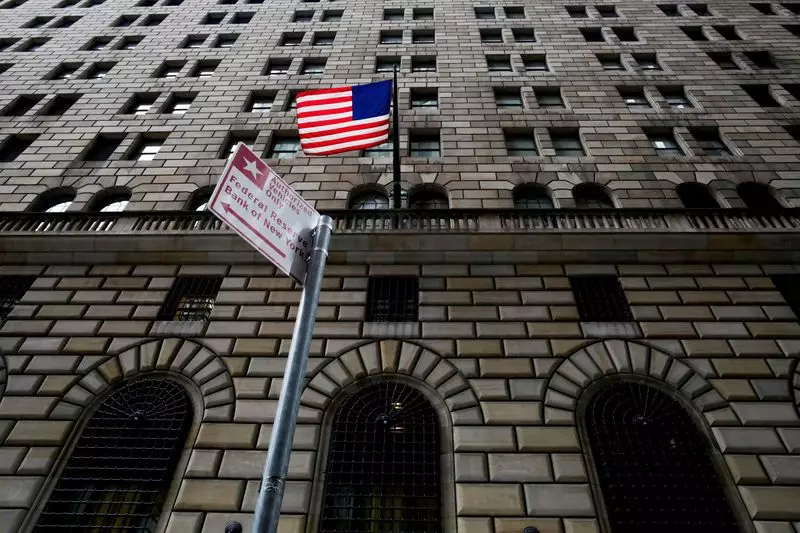The dynamics of global finance often hinge on the policies of the United States, and in recent months, the Federal Reserve’s decisions have sent ripples through emerging markets. With the Fed signaling fewer interest rate cuts than anticipated for the coming year, central banks from Brazil to Indonesia have found themselves scrambling to manage their currencies. This article explores the implications of these developments on emerging markets and their responsive measures amidst a rising dollar and higher U.S. Treasury yields.
The Federal Reserve’s recent hawkish stance, coupled with the prevailing uncertainties regarding President Trump’s impending economic policies, has sparked fears across global markets. The Fed’s acknowledgment of inflationary pressures—stemming from altered trade and immigration frameworks—heightens concerns about the stability of emerging economies. The dollar’s ascent against other currencies reflects investor sentiment retreating from riskier assets, prompting a flight toward the relative safety of U.S. Treasuries.
Consequently, the U.S. dollar surged to a two-year high against multiple currencies, including significant drops in the values of emerging market currencies like the South Korean won, Indian rupee, and Indonesian rupiah. Each of these markets faced challenges reminiscent of currency woes from the previous year, including capital outflows and heightened inflation risks. Against this backdrop, the U.S. dollar’s yield advantage poses a formidable threat to the economic stability of these nations.
Reactive Measures from Central Banks
In response to these pressures, central banks across Asia and beyond have undertaken immediate interventions to stabilize their currencies. For instance, the Reserve Bank of India actively sold U.S. dollars to prop up the rupee as it approached unprecedented lows. Similarly, Brazil’s central bank implemented interventions worth billions, ultimately achieving a rebound in the Brazilian real by over 2% through a combination of efforts.
However, these measures, while impactful in the short term, raise questions regarding sustainability. As experts note, while interventions can mitigate immediate volatility, a broader adjustment of local monetary policies is often necessary to ensure long-term stability. This situation emphasizes a delicate balancing act for central bankers—bolstering currency values while not stifling economic recovery.
Market analysts have observed increased trade in U.S. Treasuries, indicating a renewed appetite among investors for dollar-denominated assets. This shift has been characterized by a notable rise in demand for dollar longs, as traders recalibrate their portfolios in response to the Fed’s projections. The pressure on emerging market currencies has escalated, prompting further tightening and caution among central bank policymakers.
According to market strategists, the volatility in the currency markets can lead to adverse effects on investment strategies, particularly those reliant on “carry trades,” which previously provided a measure of support. The current climate, however, raises the specter of increased risk, as both institutional and retail investors reassess their positions in light of uncertain exchange rate stability.
The Broader Implications of a Strong Dollar
The ramifications of a robust dollar extend beyond mere currency valuations. For emerging markets, a rising dollar can exacerbate existing debt burdens, especially for countries with significant dollar-denominated obligations. The interplay between a strong dollar and rising U.S. interest rates can create a toxic mix, further constraining these economies as they grapple with both capital outflows and mounting inflation.
As central banks attempt to maintain currency stability, they also face the pressing need to readjust their own monetary policies. For example, Indonesia’s central bank opted against a rate cut that could have invigorated its economy, choosing instead to focus on stabilizing its currency. This highlights a broader trend among central banks prioritizing currency defense over immediate economic growth, a challenging and often precarious strategy.
A Glance Ahead: What Lies Ahead for Emerging Markets?
As the global economic landscape evolves with shifting priorities from the Fed, emerging markets must brace for potential continued volatility. The dual specters of U.S. monetary policy and political uncertainty—both domestically and internationally—indicate that central banks will need to be both proactive and responsive.
Market experts assert that emerging economies will have to adapt to a new reality characterized by increased volatility, where currency interventions may only provide temporary relief. Long-term strategies that incorporate currency risk management and economic diversification will be crucial for these nations as they navigate an increasingly complex global financial environment.
The tug-of-war between currency strength and economic stability continues to define the narrative for emerging markets in the wake of U.S. Federal Reserve decisions. The resilience of these economies will now depend on how effectively they can manage their internal monetary policies while weathering external pressures in this rapidly changing economic landscape.

